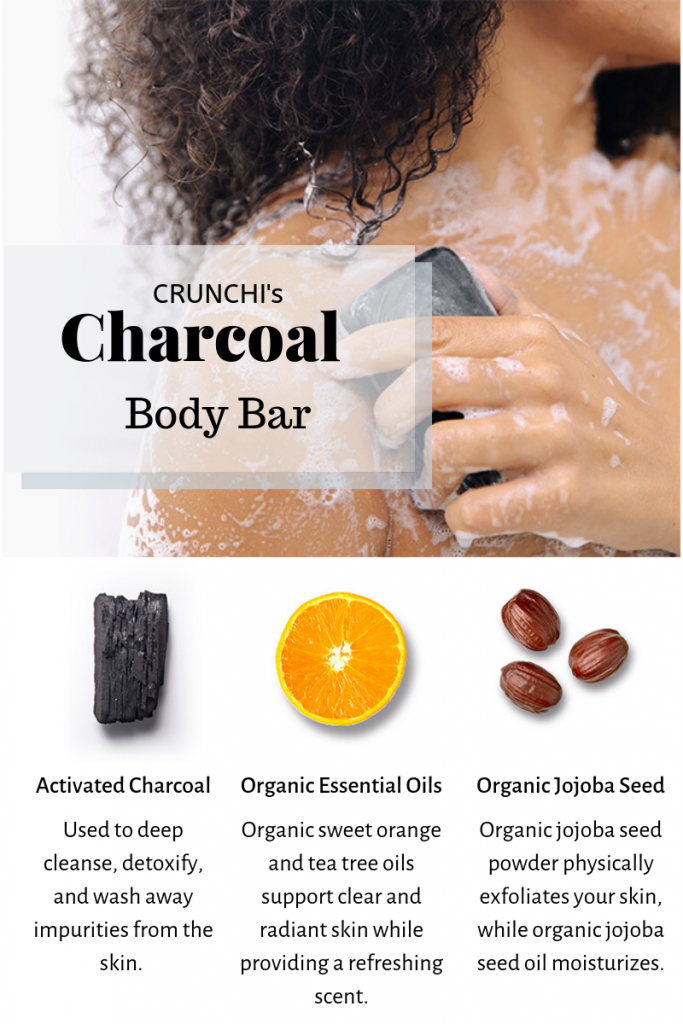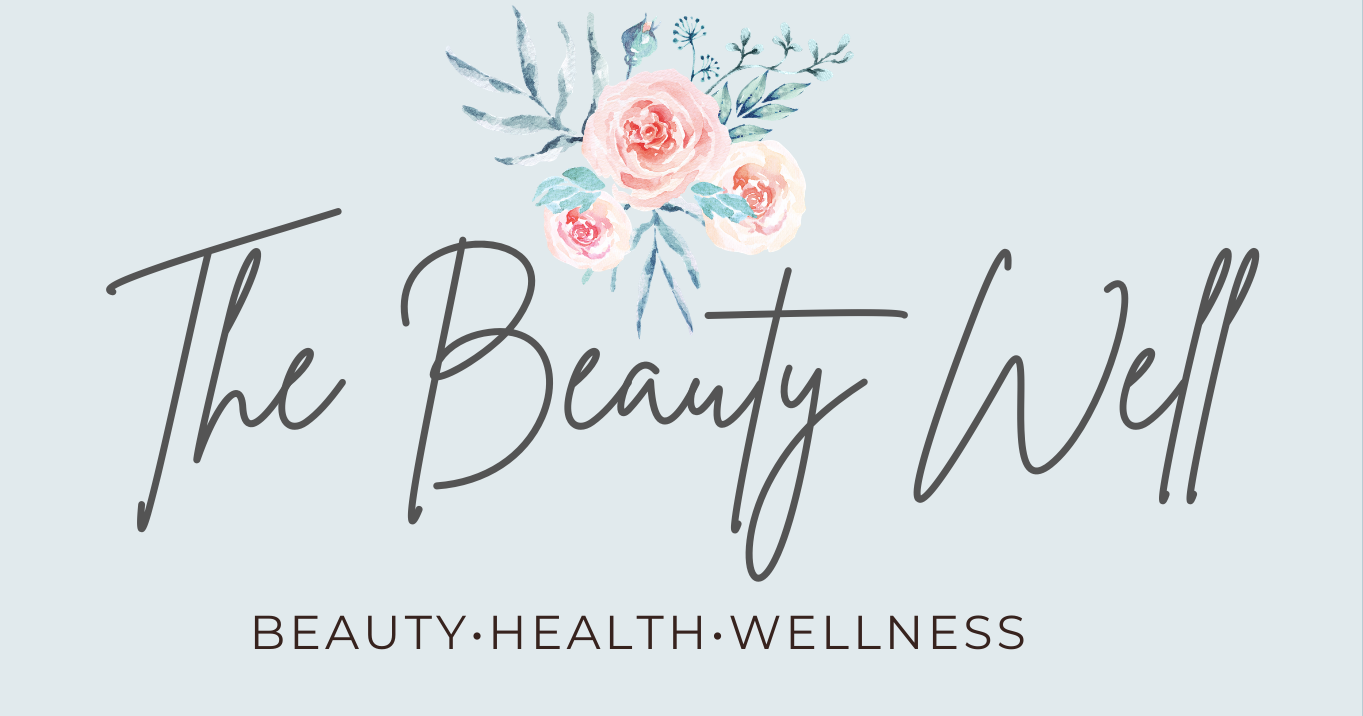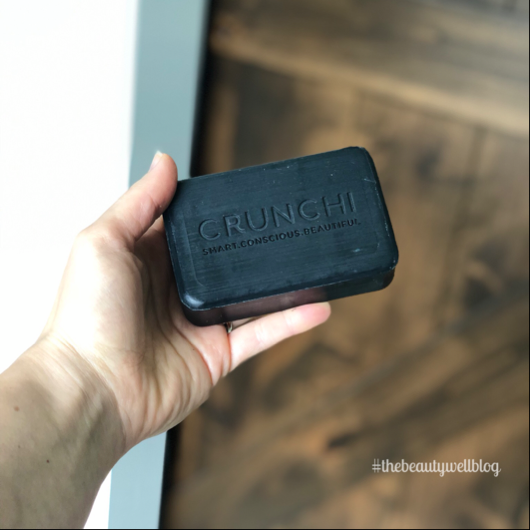So far I’ve been joyously impressed with everything Crunchi has to offer, and I’m happy to say they have dipped their toes into body care and, well, once again they have a gorgeous product. And don’t let it’s simple looks deceive you, this is a master body bar and ticks all the boxes for cleaning, detoxing, exfoliating, and moisturizing. Let’s dive into the details!

Cleansing
The Charcoal body bar was developed to be used by most skin types. The bar is 6 oz in weight and is wrapped again in biodegradable and recyclable paper. It really is very gentle for everyday use, and yet it is a fantastic cleanser, getting rid of dirt and grime, while adding moisture back with jojoba seed oil. This is a great option for everyone even my kids use it! As many who have used this body bar say, there was life before the body bar, and life after. It’s just that good! As always check if you are sensitive to the essential oils or any ingredients. I love the scent, it is so refreshing and uplifting, great for early morning showers, or any time of the day! I love that I feel truly clean, BUT my skin feels soft and moisturized, not tight and dry. This is also a great option for those new to natural deodorant and in need of detoxing arm pits. I also use it as a shaving soap, and it has made my shaving much easier and gentler with no more razor rash. And there are no ‘suspect’ ingredients like many shaving gels/foams popularized for women. Speaking of ingredients, lets take a closer look!

Ingredients
Certified RSPO Organic Soap Base
- Sodium Palmate (Organic Palm Oil and Sodium Hydroxide)
- Sodium Cocoate (Organic Coconut Oil and Sodium Hydroxide)
- notes: 0% sodium hydroxide remains in the finished product. For more info on this process and RSPO, check out my blog post “Facial Bars?? Who Knew!”
Detoxifying and Clarifying Ingredients
- Charcoal powder (Bamboo, Activated) – activated charcoal’s properties of absorption are the reason it is such a great addition to skin cleansing. It’s effectiveness at grabbing excess oils and dirt, and cleaning deep into skins pores helps to keep your skin not only clean, but helps with acne. It will also attract any toxins, so is great to help rid our bodies of those so they are not causing body odor, and that’s a win for us all! 🙂
Physical Exfoliant Ingredient
- Simmondsia Chinensis (Jojoba) Seed Powder – this is the little bits of grittiness you will feel in the bar, and it’s not a lot, but just enough to help slough off dead skin cells, also helping to keep our skin from clogged pores. This is also an organic ingredient!
Moisturizing Oils and Ingredients
- Organic Simmondsia Chinensis (Jojoba) Seed Oil [certified organic ingredient]
- Organic Glycerin (Vegetable Derived) [certified organic ingredient]
Certified Organic Essential Oils
- Citrus Aurantium Sinensis (Sweet Orange) Oil
- Organic Melaleuca Alternifolia (Tea Tree) Leaf Oil
- Notes: These provide the uplifting citrus scent, plus they are not phototoxic or photosensitizing as this is a wash off product. These oils are also certified organic ingredients.
Miscellaneous
- Water (Aqua)
- Sodium Citrate (pH adjuster/ chelator/ preservation)
What I love about this body bar is the conscious way it is produced, and how Crunchi continues to remain transparent in all it’s ingredients, especially in scents. This soap smells so nice and it’s so re-assuring to know it’s full fragrance disclosure of the organic essential oils. I feel so good knowing I’m using something completely safe for myself and my family. And that it is doing good things for my skin, for the environment, and for impoverished families who have jobs thanks to the RSPO!
Why Safe Soap?
If someone was to give you a large jug of some unknown liquid substance and tell you that you need to use this in your car, would you, without knowing what it was, pour it into your gas tank? Then why would we do that with ‘unknown’ liquid substances by ingesting food and drink products in which we do not know the ingredients (*cough* soda) or even slather all over our skin? Our skin is the largest organ we own. Studies have shown, and more recent with the sunscreen absorption study that woke up the FDA, that our skin absorbs topical products and ingredients within a minute, and those often remain in our bodies for 2 to 5 days. And unlike food where at least enzymes are breaking it down and our digestive system is pulling apart and using the good and trying to dispose of the unusable or bad (more on this later!), our skin does not have as sophisticated a defense system in place. And the interstitial tissue layer just underneath the skin, is the perfect conduit to distribute all those ingredients to any part of our body like an organic highway system. Do you know what you are putting on your body?
You would think that soap would be the last problematic product as far as ingredients since it’s suppose to clean our bodies (and homes) and get rid of germs, right? Yes you would think it would, but sadly what is often used to make soap products is proven to be very un-safe when it comes to our overall health. Let’s look at some ingredients to avoid in soap:
- SLS – sodium lauryl sulfate is present in most shampoos and also in liquid body washes, as well as household cleaners, toothpaste, makeup foundation, bath salts, laundry detergent, and liquid hand soaps.
- This chemical compound begins with coconuts, but once it has been heavily chemically processed the end result if far from natural.
- During it’s processing, SLS is contaminated with 1,4 dioxane, a known human carcinogen. There is no guarantee that the 1,4 dioxane is not in the final product as there are no regulations requiring testing of cosmetic products. There is a way to extract 1,4 dioxane through a vacuum system, but this is another cost and most manufacturing companies aren’t interested in doing anything that is not legally required. Bottom dollar, Baby!
- According to over 16,000 studies and their compiled results by the Environmental Working Group, SLS has been linked to:
- Organ system toxicity
- Endocrine disruption (hormones), neurotoxicity, ecotoxicity
- Cancer and possible mutations
- Skin and eye irritant
- Allergic reaction
- But isn’t the amount of SLS limited in each product to FDA safety regulations? Supposedly, but since no pre-market testing is required, it begs the question of how well the amounts are truly being regulated, that SLS is still most likely contaminated with other very concerning chemicals, as stated above, and the larger challenge of no one knows what the cumulative amounts of SLS will do over time to human health. Let’s face it, we aren’t just using shampoo every day, we are washing our hands more than once a day (I hope!), showering, cleaning our houses, brushing our teeth, putting on cosmetics and skincare, etc., etc., etc. Especially concerning is no one really even knows if the ‘small’ amounts of SLS are actually safe in the first place, because in our country a chemical is innocent until proven guilty. Not sure what that is going to look like, but higher rises of cancer, autoimmune disease, allergic reactions, brain disorders, and many other health concerns is making more folks take a long awaited wake-up call and actually begin questioning our faith in many of our un-tested chemicals.
- FRAGRANCE – the ugly covert operation of all manufacturers that does not come up smelling like roses. This is an FDA loophole that allows companies to keep their proprietary blend, secret concoction, for how they are scenting their products. Over 4,000 different chemical compound have been discovered in the one little word ‘fragrance’. Some of these are phthalates, endocrine disruptors, diethyl phthalate which is linked to sperm damage, musk ketone found in human fat cells and breast milk and suspected to be a hormone disruptor, and many others often associated with gut disorders, highly allergic reactions, central nervous disorders, respiratory failure, and many other health concerns. Frankly, in any product labeled with ‘fragrance’ we have NO idea what is in that word. It could be anything, and therefore even if you were good and reading labels and knowing ingredients, you still would not be able to know what was used for their fragrance. Russian roulette anyone? Thankfully, there are measures being taken on transparency with ALL ingredients including what is in fragrances, and many companies are beginning to move in that direction. Also, there are many smaller greener companies that are already disclosing their fragrance ingredients, and more importantly, are using safer ingredients such as essential oils, absolutes, and extracts for scent. Make sure to read your labels and support companies that are transparent in this area. Next time you smell your scented laundry, it might not smell so ‘clean’ after all?! Isn’t it amazing how we have been conditioned over the years to think that if something ‘smells good’ it is clean? Would love your thoughts on this too; is this mind blowing to you like it was to me when I first learned about the dirty world of ‘fragrance’?
I’ve just mentioned two of the many concerning ingredients in traditional soaps, mostly liquid form. Many others are PEGs, parabens, DEA, and more. My goal is to educate since I am so glad I was educated to be able to make informed choices on the products I wish to use for my family. I am continuing to learn, so would greatly appreciate any suggestions for safe swaps.
My husband and I share a bar, and with regular, daily use, it looks like this bar is going to last us at least 3 months, maybe more, so it is definitely worth EVERY penny! Make sure to store the bar away from running water, and do not allow it to sit in water, as this will degrade the bar faster. Grab a handy draining soap dish and you will be golden!
What is your favorite body wash? Leave me a comment so I can check it out!
Blessings,


